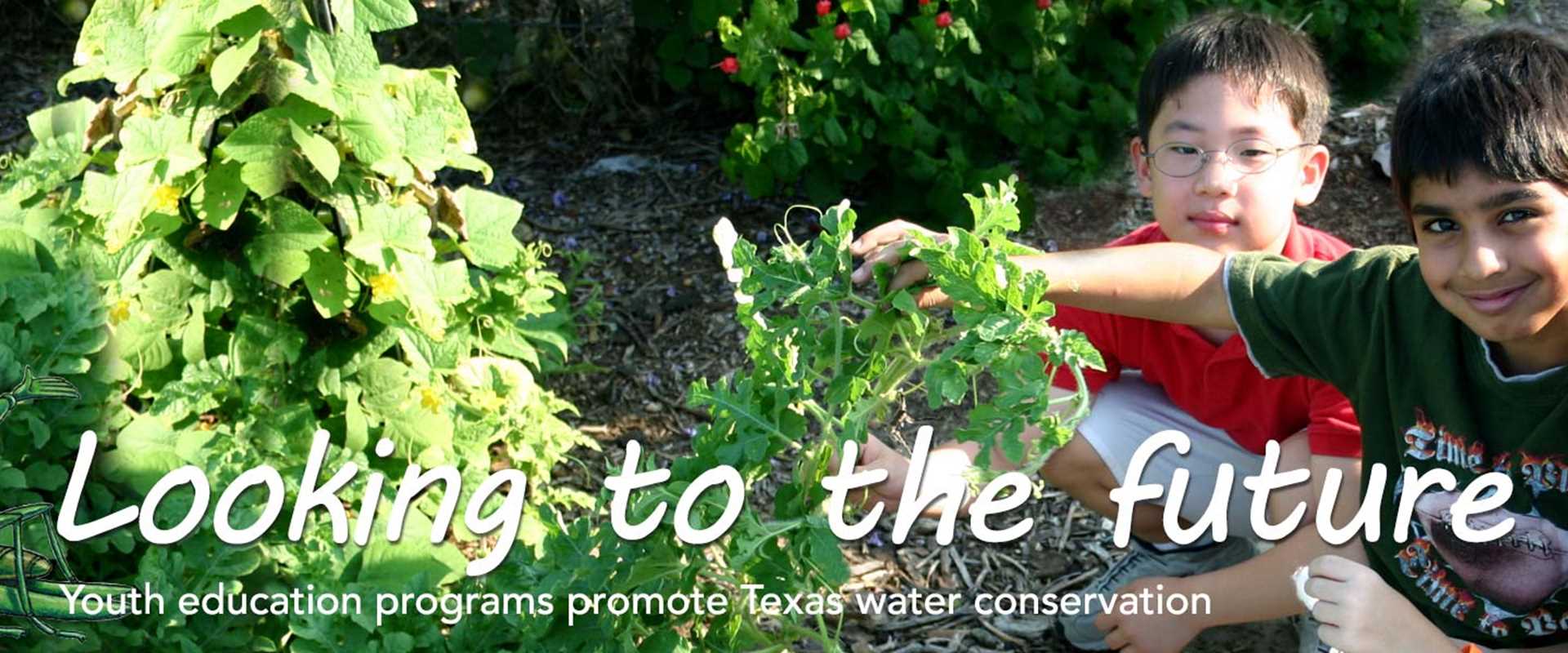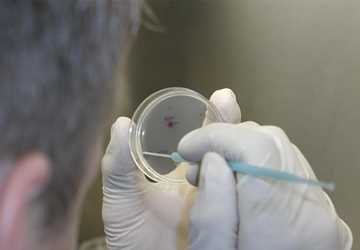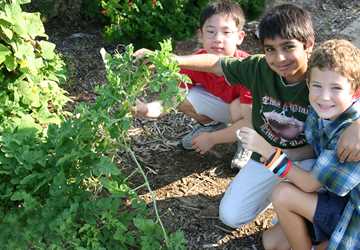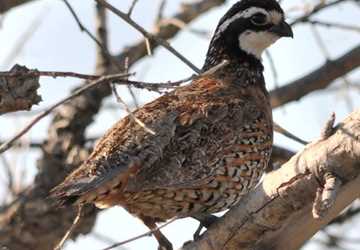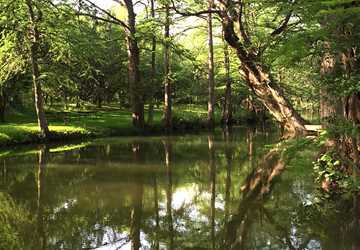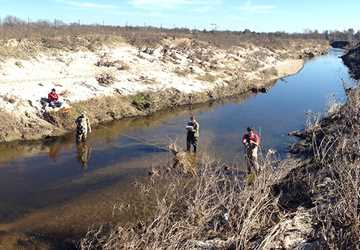By Eva Vigh
Texans in drought-susceptible areas face an arid future without knowledge of water management and planning. According to environmental experts, the best place to begin teaching these strategies is schools. Introducing water education to children is critical to ensuring adequate clean water for future generations.
Various Texas water education programs such as Water4Otter, International Junior Master Gardener (JMG) and the Texas Water Development Board (TWDB) Kids have designed educational tools and curricula specifically for young students in an attempt to increase knowledge of water-related issues and conservation.
Water4Otter campaign
“We know that across the North Texas region, water conservation is going to account for one-fourth of our future water supply,” said Denise Hickey, public relations and water conservation manager at North Texas Municipal Water District (NTMWD).
“We need to start teaching our youth the value of water and that it’s a limited source.”

In 2014, NTMWD launched Water4Otter, a water awareness campaign funded by TWDB and intended to serve as a statewide model. The campaign uses mascot Otis the Otter and his friends Bob the Bobcat and Farah the Fox to help remind children that Lavon Lake, the primary natural water source in North Texas, is a resource shared by humans as well as animals.
Research from NTMWD’s regional Water IQ campaign in 2014 suggested that students were more likely to be concerned about water efficiency if they related water consumption to the needs of animals that rely on the same source of water, Hickey said.
“If you relate water use to the needs of the otter, then students will go home and start talking to their parents,” she said. “The whole aim of the program is to increase the conservation of water and efficiency in the home.”
We need to start teaching our youth the value of water and that it’s a limited source.
The Water4Otter program delivers in-school presentations and provides removable stickers with water-saving tips to students. Children can place these stickers around their home as a friendly reminder to parents to maintain eco-friendly habits, such as fixing leaks or only washing full loads of dishes. The water district also designed the Water4Otter app, a free interactive game that encourages children to learn water conservation strategies while helping Otis and his friends.
JMG curriculum
Engaging children in educational, hands-on water conservation activities is a mission shared by JMG as well.
“Water conservation in Texas is vitally important,” said Lisa Whittlesey, national coordinator of the kids gardening program. “It is so important our children understand that because they are our future consumers of water and decision-makers on how water resources are allocated.”
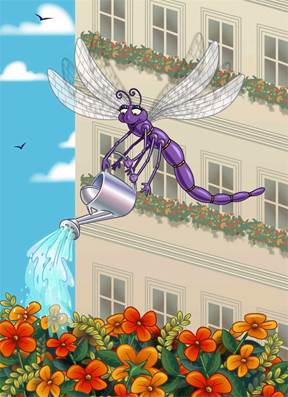
JMG is composed of seven different curricula that focus on teaching children to give back to their communities. The Operation Water curriculum is designed exclusively for water education, and each of the other programs also emphasizes the importance of water as a natural resource that must be preserved, said Whittlesey, a Texas A&M AgriLife Extension Service specialist.
She said the curriculum encourages students to be active learners by participating in experiments and community conservation projects. “Kids really learn by doing,” she said. “Our program is taught in a very hands-on, engaging way so the kids actually experience it and are not just reading about it.”
Some of the skills the students learn include the appropriate selection and use of landscape plants and mulch and irrigation techniques that minimize water loss in gardens.
“They do experiments to show, for instance, that watering deeply really encourages the root system to grow deeply,” Whittlesey said. “During a drought it’s better to water deeply and infrequently versus small, frequent amounts of water.”
Water conservation in Texas is vitally important. It is so important our children understand that because they are our future consumers of water and decision-makers on how water resources are allocated.
The JMG curriculum is aligned with the Texas Essential Knowledge and Skills (TEKS), which are the state’s academic standards, and the Standardized Testing and Reporting (STAR) test. It also strongly supports project-based learning — a teaching method that encourages hands-on involvement to help master concepts, she said.
TWDB Kids
In view of the JMG curriculum, TWDB developed a similar approach to youth water conservation awareness by offering classroom-based curricula in four programs:
- Water for Texas: a 16-page coloring and activity book for kindergartners through third graders designed to engage them in water conservation techniques at home
- Major Rivers: a multidisciplinary set of educational materials for fourth and fifth grade classrooms
- Raising Water IQ: a curricula for students in sixth through eighth grade, in which water resources are covered in greater depth
- Water Exploration: a high school, web-based curriculum where students and teachers work together to conduct research, build a stronger understanding of water science and explore solutions to critical water issues.

Some of the interactive activities developed by TWDB include constructing a bean bag or water balloon toss to symbolize water usage. Older students have opportunities to identify where their school could increase water-use efficiency by measuring water fountains or calculating water usage every time the football field is irrigated.
“We really hope to have educated and more aware water users,” said John Sutton, municipal water conservation team lead at TWDB. "As they grow, they are our future water users and decision-makers.”
Program impacts
As these programs continue to engage students across the state, evaluation data shows that they are making a measurable difference.
Hickey said Water4Otter post-campaign studies revealed approximately 78 percent of the 3,000 students who returned the surveys participated in water-related conservation activities with their families and used the removable stickers around their home.
We really hope to have educated and more aware water users. As they grow, they are our future water users and decision-makers.
Research on the junior gardening program’s impacts indicated that children became more actively involved in their community and environment as related to water conservation after successful course completion, Whittlesey said. The program reaches one million children a year nationally, and approximately 200,000 a year in Texas.
Sutton said pre- and post-tests distributed to classrooms enrolled in TWDB Kids revealed a significant increase in student awareness of water conservation issues. The Major Rivers program reached about 33,000 students last year alone.
As water concerns continue to increase and evolve in Texas, the success of these programs will play a vital role in educating youth on the management, preservation and conservation of the state’s water supply.

